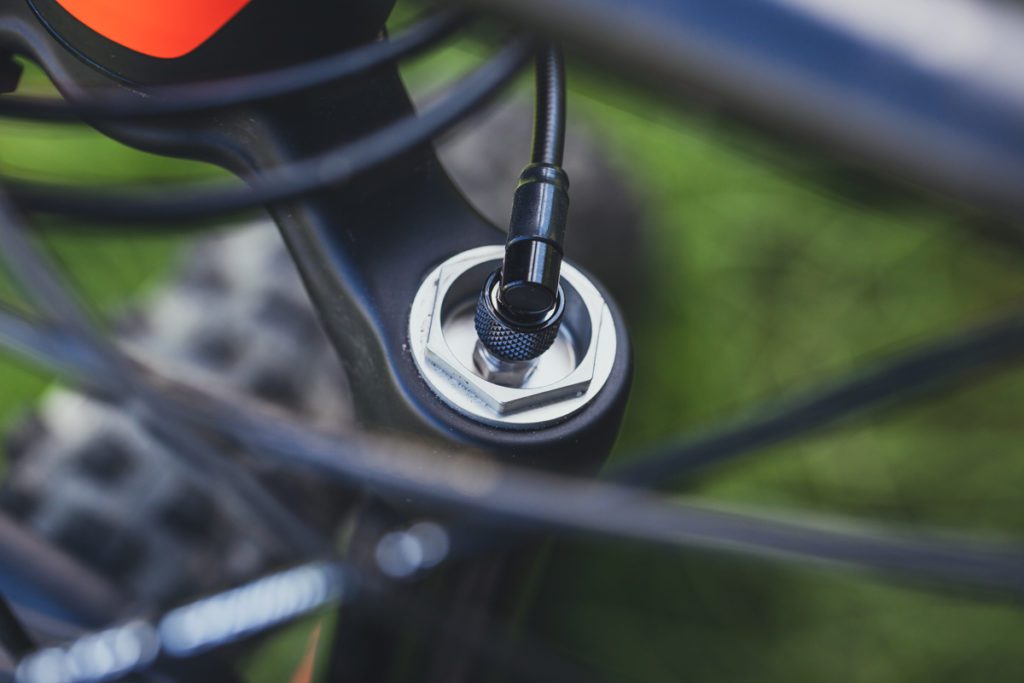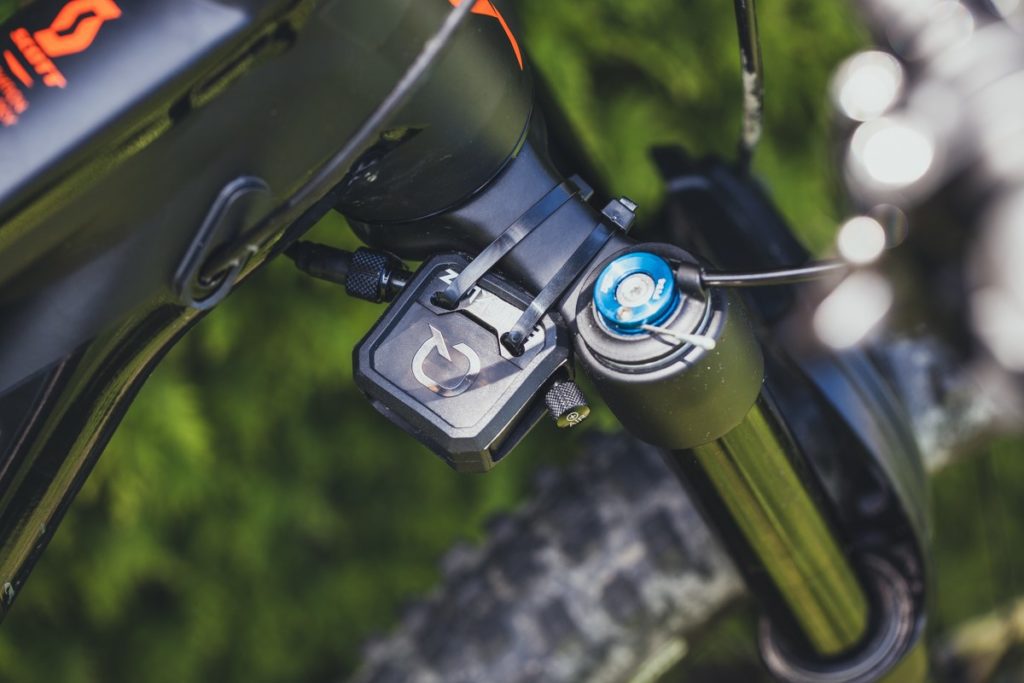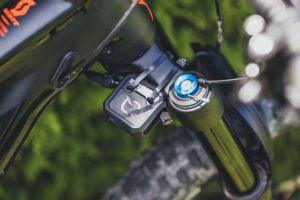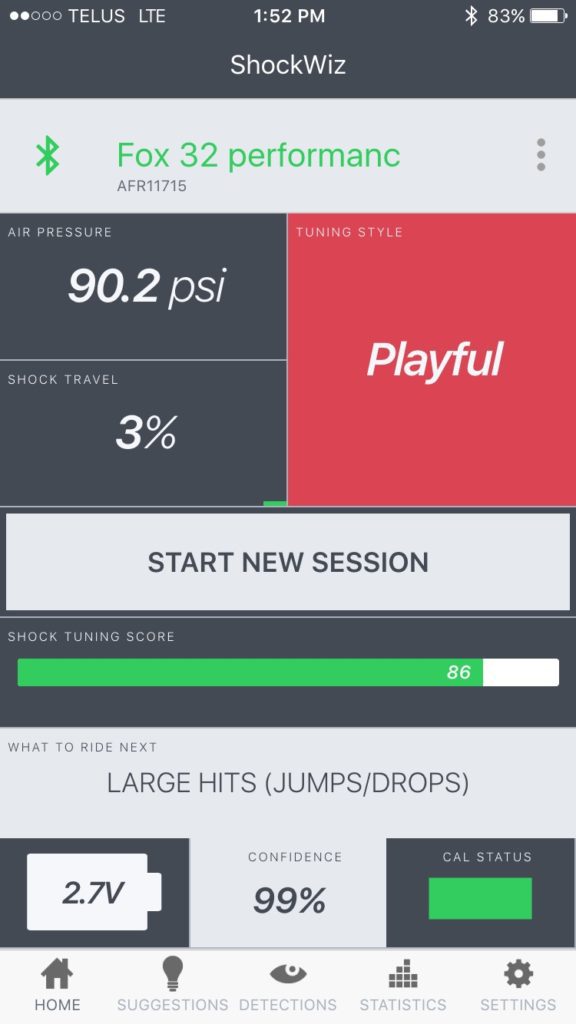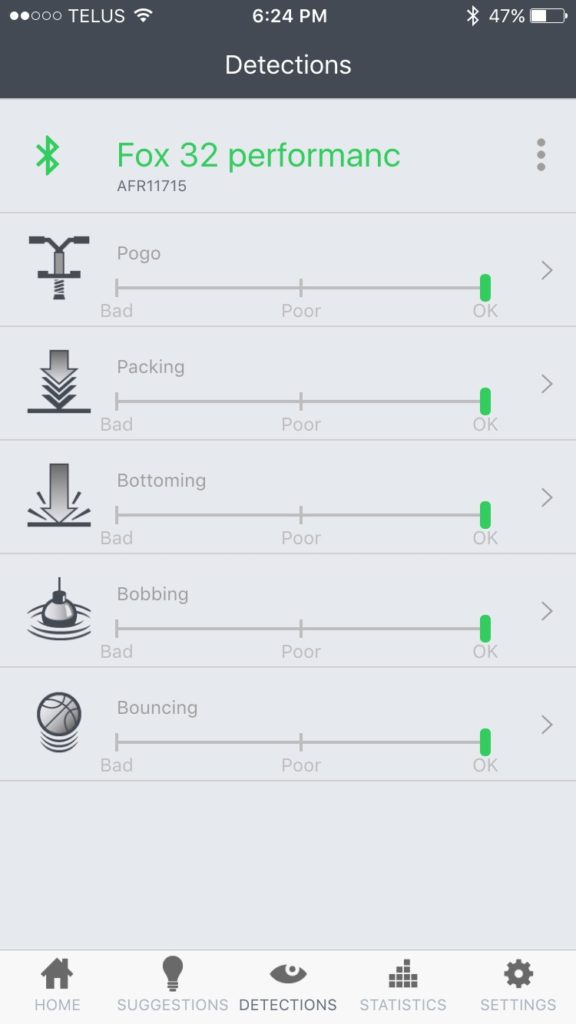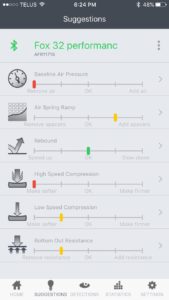The Quarq ShockWiz: A mechanic in your pocket
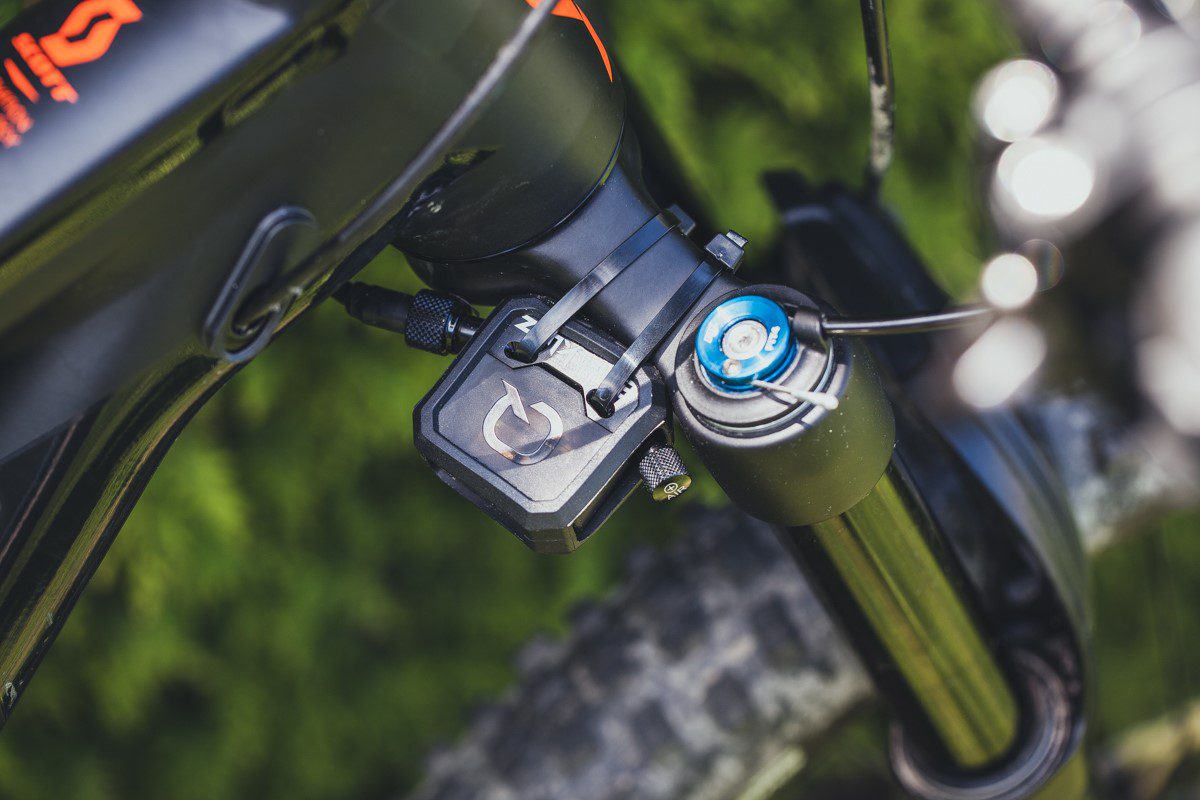
A suspension setup always involves an element of guesswork. Whether it’s how much sag you should start with, or how many clicks to dial the rebound adjustment, you usually start with a baseline and make adjustments from there based on preference.
If you ride the same trails all the time you’re most likely not concerned about changing your settings. But if you travel somewhere new and want to make the most of your bike’s suspension, you’ll need to start from scratch to dial in those optimal settings. Professional racers have team mechanics to adjust suspension settings to any given course–wouldn’t it be great if you had one, too?
The people at SRAM think so, and that’s why they’ve developed the Quarq ShockWiz, a device that attaches to your suspension via zip ties, relaying information about your suspension performance to an app on your smartphone. It really is like having a mechanic in your pocket.
Installation and setup
The device does require a few steps before it can accurately deliver recommendations. You begin by zip-tying the ShockWiz to your shock or fork, which is pretty straightforward. The unit also comes with a few different options for perfectly attaching the air pressure hose to your shock or fork. Once the ShockWiz is secured and attached to your suspensions’ air chamber the app will walk you through the setup, which includes letting all the air out of your suspension and cycling the travel to establish a baseline for measurement. The app is well designed and I found the steps clear and easy to follow.
Feedback
Once all set up you can start a new session and begin accumulating data. The app will also ask you for your preferred riding style, and has four different tuning options: Efficient, Balanced, Playful and Aggressive, so you can match your riding style to these settings. I chose the playful setting for my test. It takes about 10-15 minutes of riding before the app begins providing feedback. I chose to ride for an hour to try and hit varied types of trail and offer more data for the app to process. The app then gave me a tuning score of 86/100. Of course, there were adjustments to be made based on the app’s feedback. The suggestion screen recommended I remove some air from the fork and soften up my compression settings. Even though I felt the fork was performing well, I dropped my air pressure and went back out on the trail. After about 20 minutes I checked back and my score had improved to 95/100.
Want to win your own ShockWiz? Enter our contest here
Features
The app also has a detection page which will tell you if your suspension is experiencing any significant amount of bobbing, bottoming out, bouncing, packing or pogo effect. If you have your suspension set up properly and the Shock Wiz indicates you are experiencing any of the above symptoms, it may indicate a repair or service is needed. The app also has a statistics page which gives you information on how many deep compression events you encounter as well as average jump time and dynamic sag. As you can see in my first test with higher air pressure my dynamic sag was 11 per cent. When I dropped the pressure I received a much more balanced 20 percent score.
Who is it for?
Overall, I found the ShockWiz very easy to use. A suspension setup has a reputation for being complicated and the ShockWiz really helps to simplify the process. If you can change a flat tire and use Instagram, you most likely possess the skills to tune your own suspension with this device. I can see it being very useful for racers that don’t have the luxury of a personal mechanic at every race. One lap or run on the course with the ShockWiz and you can customize your setup appropriately. Bike shops could also greatly benefit by using the data to help set up customers on new bikes. It will be interesting to see where this technology goes in the future. With e-bikes having their own dedicated apps, I could see forks following suit and possibly having a ShockWiz app built-in.
